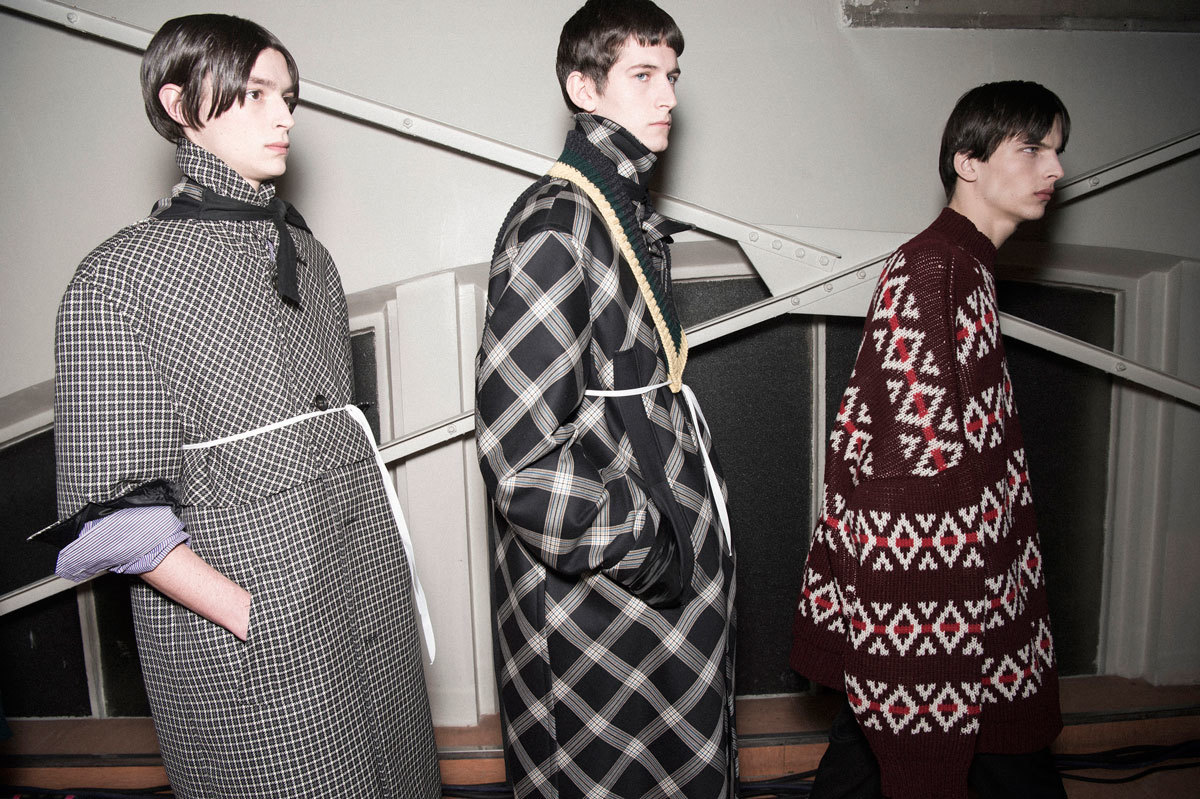This industry loves nothing more than a discussion about what fashion should be and how it should get there. We shake our heads at the state of the over-worked fashion system today and look back on a time when things were different, suggesting rules and regulations to improve things. Following a season of shock designer departures — Raf Simons from Dior, Alber Elbaz from Lanvin, and speculation that more mega brand changes are imminent — the fall/winter 16 men’s shows kicked off in fashion’s mission control center of Paris on Wednesday. But if designers reacted to an industry in disorder, their message wasn’t about some grand solution to fix things—it was a reflection of the artistic expectations and limitations put on designers by the industry and its surrounding world. This was about creative freedom.
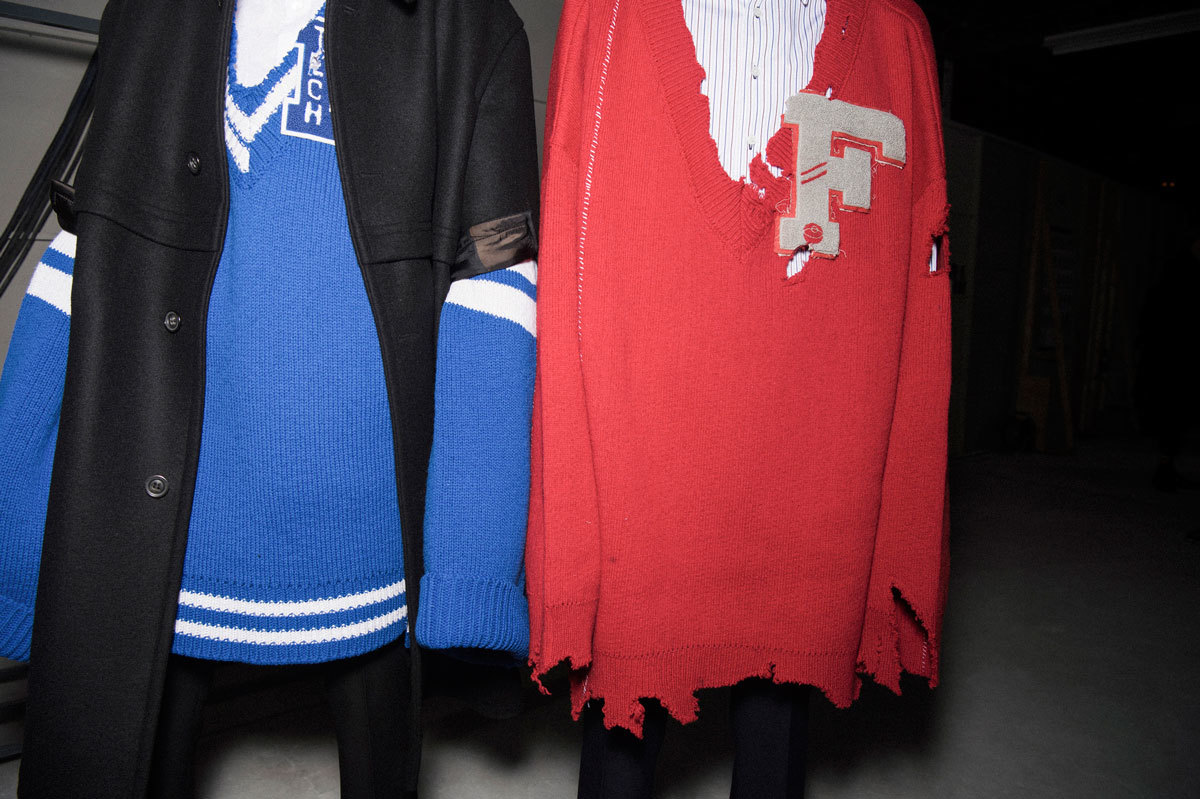
Before he left Dior in October, Raf Simons spoke to Cathy Horyn about the pressures of the fashion cycle where collections are produced in three weeks, the next show is always around the corner, and there’s virtually no time for the cultivation of ideas. For his first show for his eponymous brand post-Dior, Simons had erected a massive maze inside a show space where guests lined the sides of narrow corridors as the models made their way through. The show notes listed his inspirations: “Angelo Badalamenti, David Lynch, Martin Margiela,” was one category. “Horrors, The Scream, Scream, Elm Street,” was another. And while we all tried to decipher their meaning, Simons was coming from a place of utter straight-forwardness.
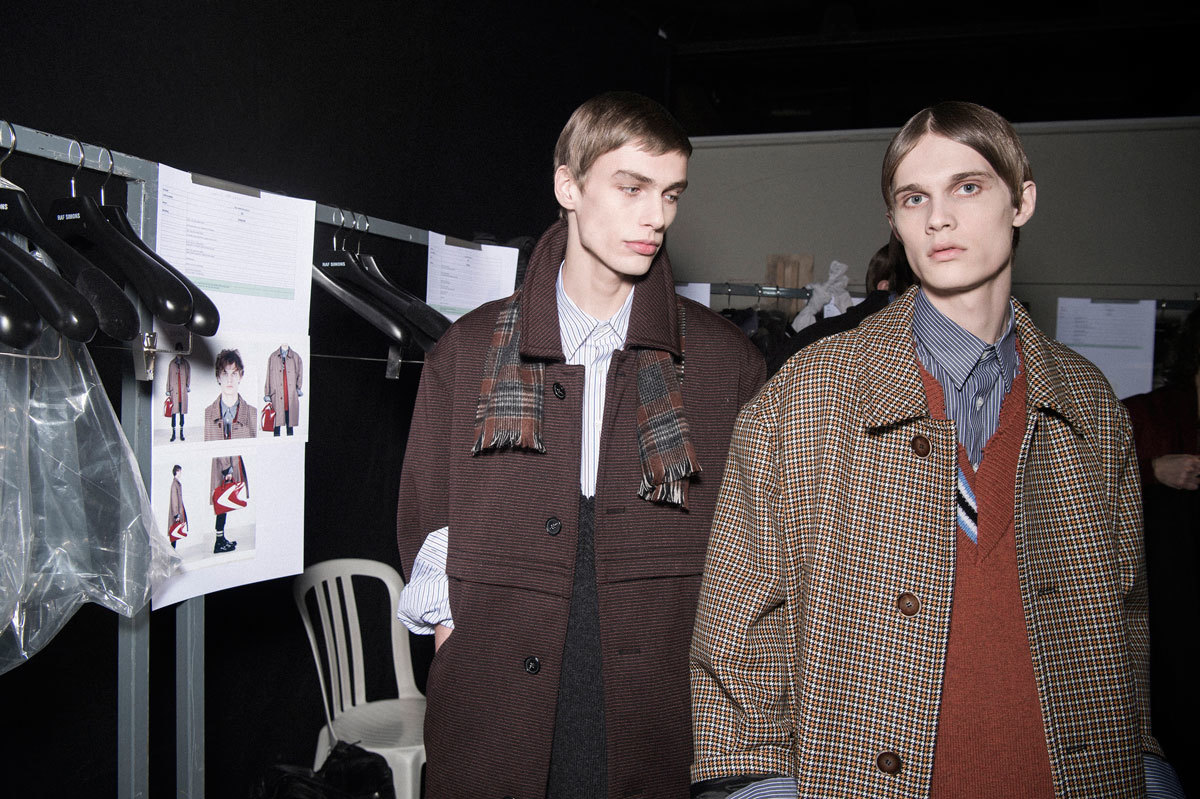
“It’s not that it’s only this or that,” he said backstage. “I didn’t want to make a story. I didn’t want to make a space, either. It’s an environment that’s not defined by the space, and also not by the story itself. It’s just all the things that were on my mind.” The collection was an explosion of ideas—a kind of sensory overload of the mind of a designer, who had finally been given time to come up with ideas by the ton, the way it should be. “It was trying to not think, ‘What story should I make out of Cindy Sherman and Twin Peaks?'” Simons said, listing two of the references that fed into the decayed prep look of the collection, defined by its oversized, tatted tennis jumpers and enormous puffa jackets, which referenced earlier collections also listed in the show notes. “Because we have our form of language, we do it automatically,” he noted of the look.
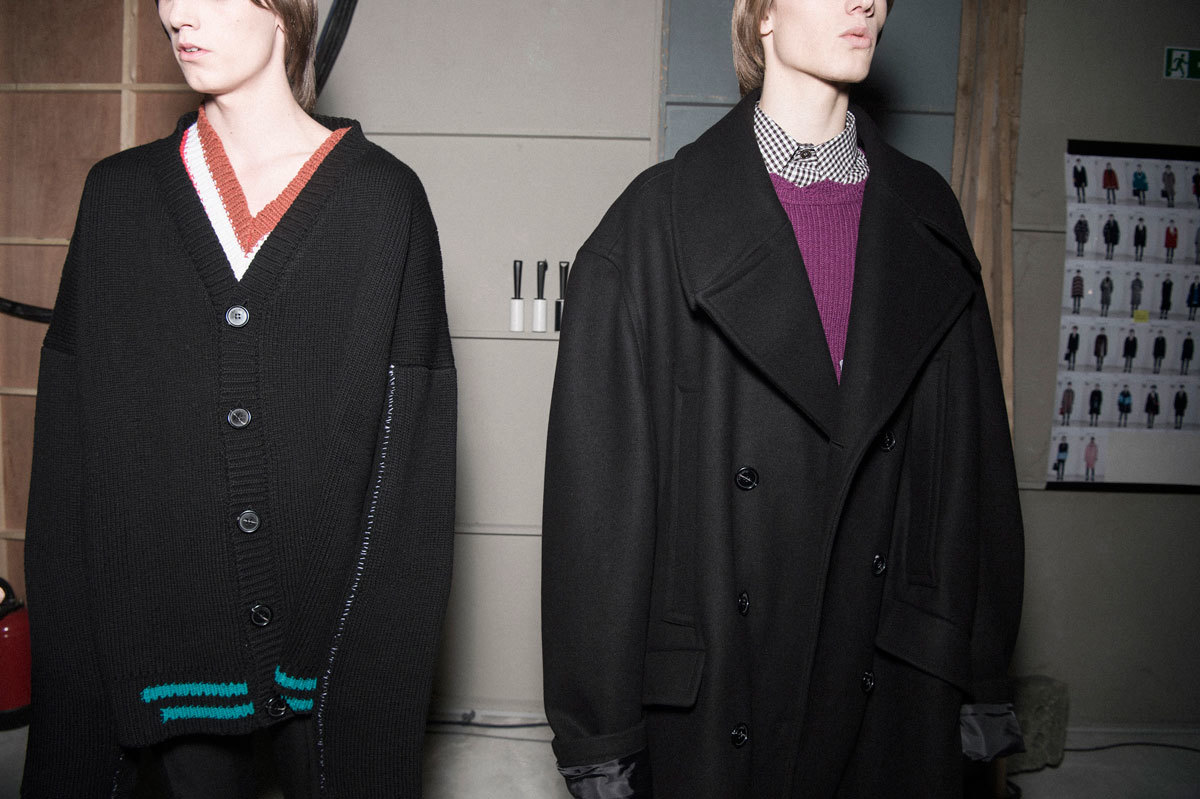
Horror — of which Simons is a fan — played a key part, not just in the moth-eaten edges of garments, the styling, and the eerie atmosphere of the maze, but on a more intellectual level, in Michel Gaubert and Ryan Aguilar’s genius soundtrack mixing the Twin Peaks score with the voice of its composer Angelo Badalamenti describing his creative process with David Lynch that created the music. (It eventually launched epically into “Crimson and Clover,” as a nod to the American youth references of the collection.) Backstage, Simons talked about the Cindy Sherman retrospective Horrors, which made a huge impact on him. “I was a fan of Cindy since I was young. It’s very fascinating to me, because I always think about nightmares and I’m very interested in horror movies,” he explained.
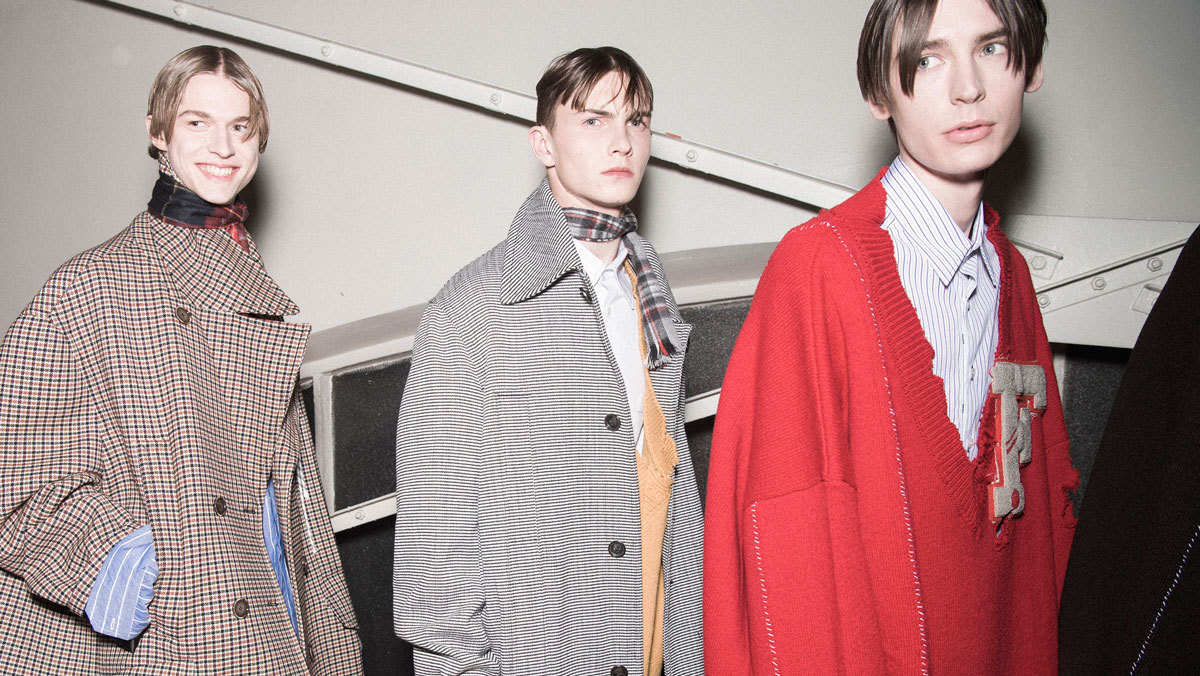
“I like to make beautiful things, but it’s also interesting when something goes wrong—or something’s weird, something’s dark, something’s a contrast. That’s very much how Twin Peaks came in. It was a period when I was really starting to be in my own environment, leaving my parents’ house. I don’t know how to explain the impact of Twin Peaks on my generation. At the end of the week we would group together and sit and watch it.” Above all, Simons said, the collection was about joining together his thoughts, not necessarily in a way that should make sense but simply be about creation. “For what reason, to me, isn’t that important. Obviously there are things that have changed in this moment for me because of some decisions I’ve made, but in the end there doesn’t have to be an explanation for that.”
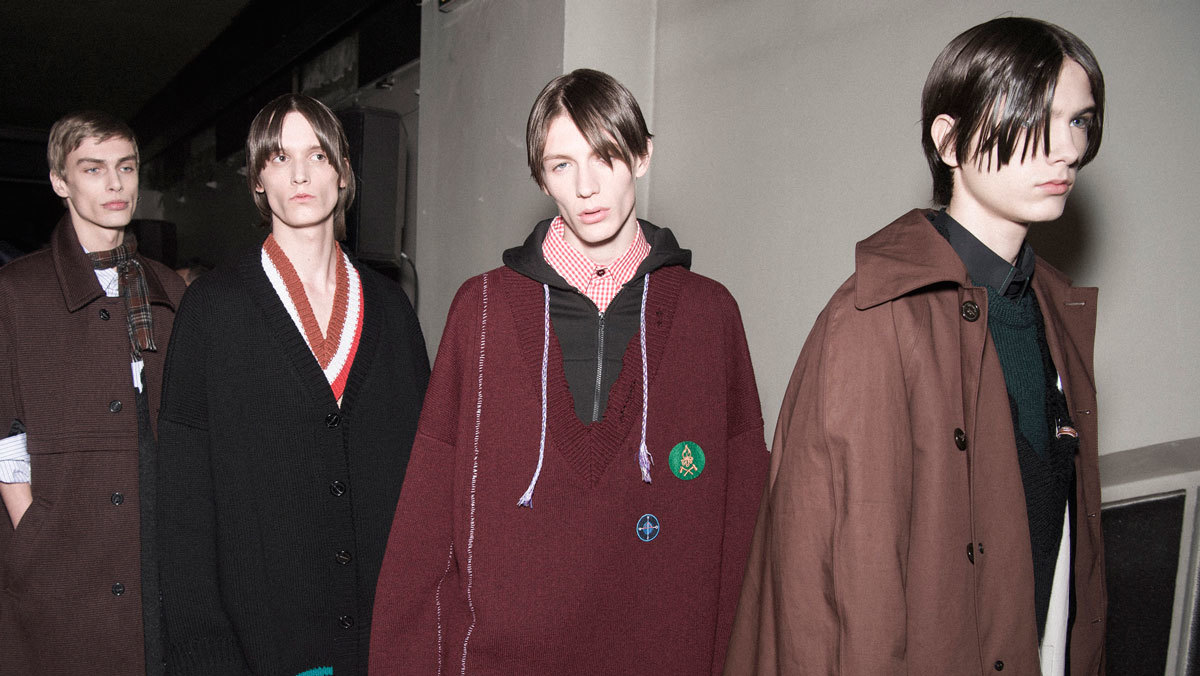
Globalism and multiculturalism are at the very root of Maria Grazia Chiuri and Pierpaolo Piccioli’s work for Valentino, to the point where they don’t even need to state it. They freely and courageously mix cultural references, borrowing fragments from around the world in one giant gesture of tribute and respect. It’s not about where you come from or what you look like, but that we are all one and able to share our cultures equally. Their collection on Wednesday evening at the majestic Hôtel de Rothschild continued this global homage, this time drawing on Native American dress and the gods of rock ‘n’ roll. “On our mood board you find Morrissey but also John Lennon and the Beatles and the Rolling Stones. It’s important that we reflect all the things we like in our work,” Chiuri said backstage.
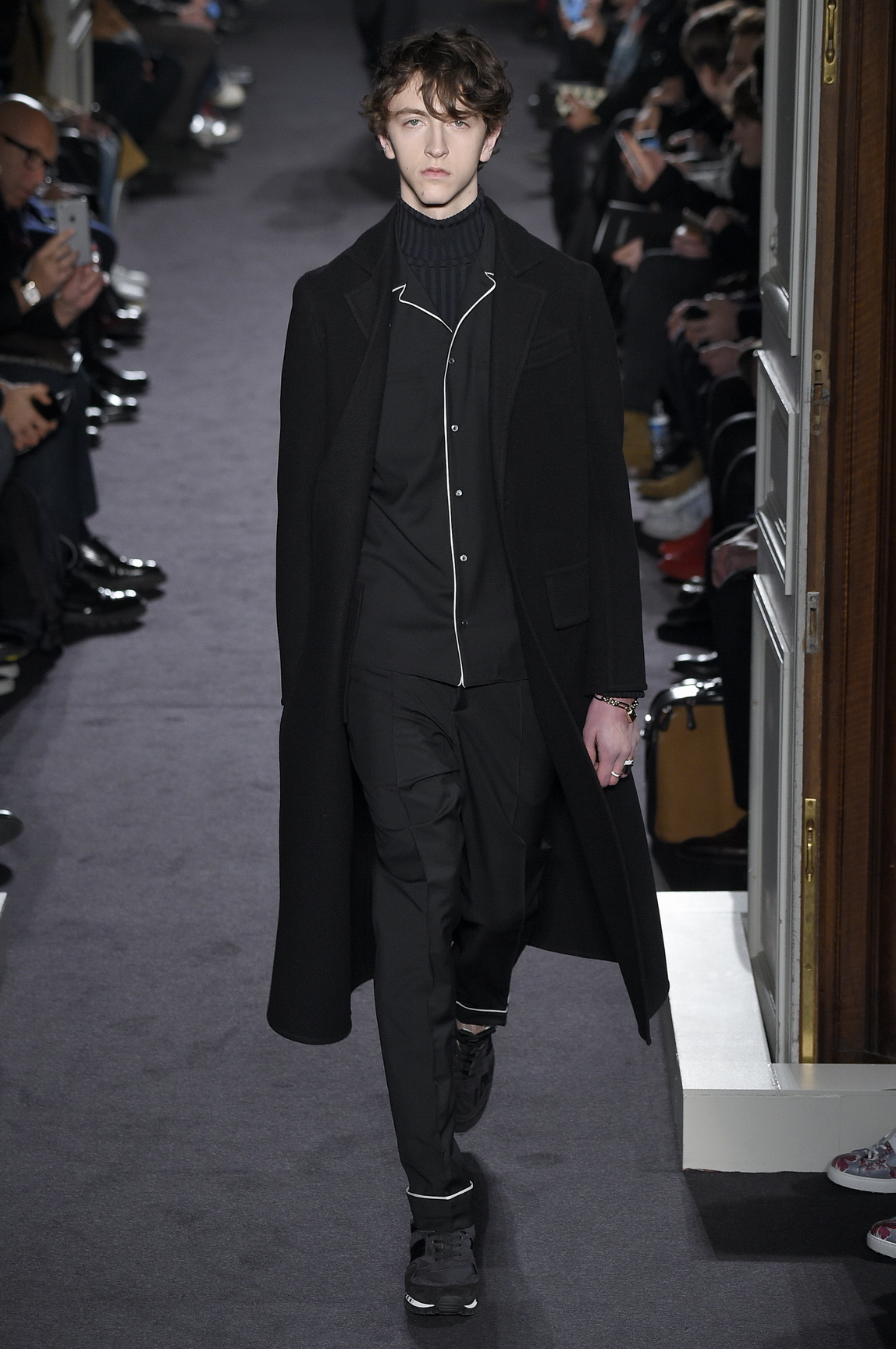
“What we propose is our point of view, but you choose the pieces and use them in your personal style. We really believe in freedom in fashion, and that’s what we propose in our work.” In the grand debate of the industry, her words were powerful in a time when fashion is constantly subject to the demands and expectations of its audience and consumers, who want to control their creative output — from design to presentation — in a way that limits and effectively ruins their artistic freedom. “It’s about finding your own way of expressing yourself rather than representing yourself,” Piccioli said, eloquently summing up the very idea of multiculturalism. “Only from the personal can you become universal. It’s a journey to find the identity to express yourself.”
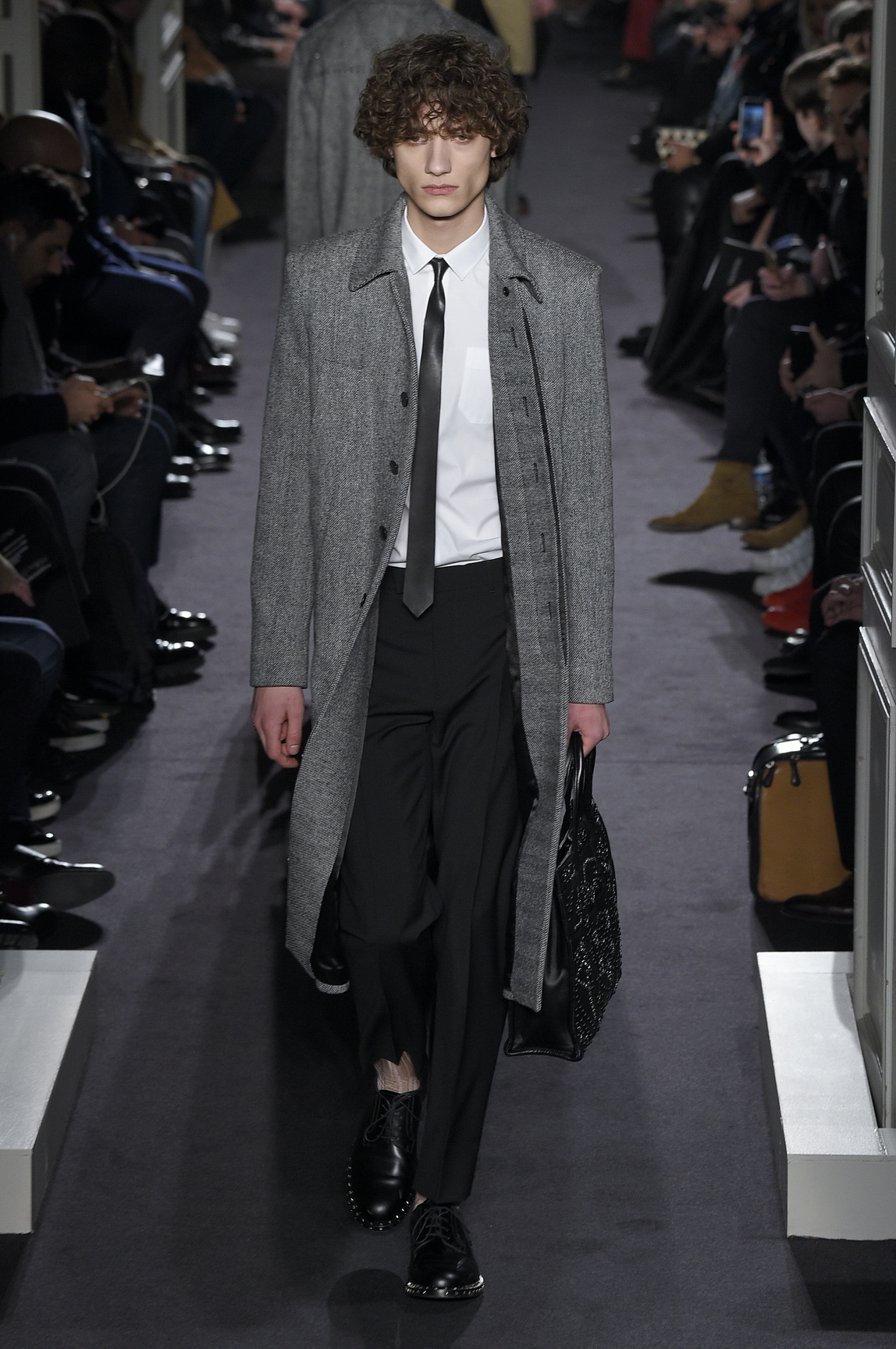
In their show notes, the Valentino designers wrote about “the blending of roots” where “the individual rises without any form of individuality.” They ended on a quote by the explorer Jon Krakauer, which could easily sum up the migration situation currently unfolding in Europe: “Happiness is only real when shared.” As Piccioli said, “Memory is important to define who you are. The starting point was existentialism in terms of searching for yourself. The moment things are not safe you have to really search for yourself, so it was this kind of journey into yourself to find your way.” At Valentino, you are not defined by where you come from but by where you want to be. It was a powerful stance for freedom, creative as well as cultural.

A designer’s right to creative appropriation is gospel at Off-White where wunderkind Virgil Abloh has conquered pop culture one signature white stripe at a time. On the first day of the men’s shows in Paris, he made his runway menswear debut, cementing the importance of Off-White in the current media picture. Off-White is the first label to take the streetwear segment’s obsession with the legacy of avant-garde fashion such as Martin Margiela, brand it and bottle it for the consumption of a new generation of kids brought up on social media and more fashion insider knowledge than any generation before them. Alongside Demna Gvasalia of Vetements, Virgil Abloh is their preacher man—only a phone call away from Kanye West and Justin Bieber, who have become the poster boys for this generation of dressers in the know.
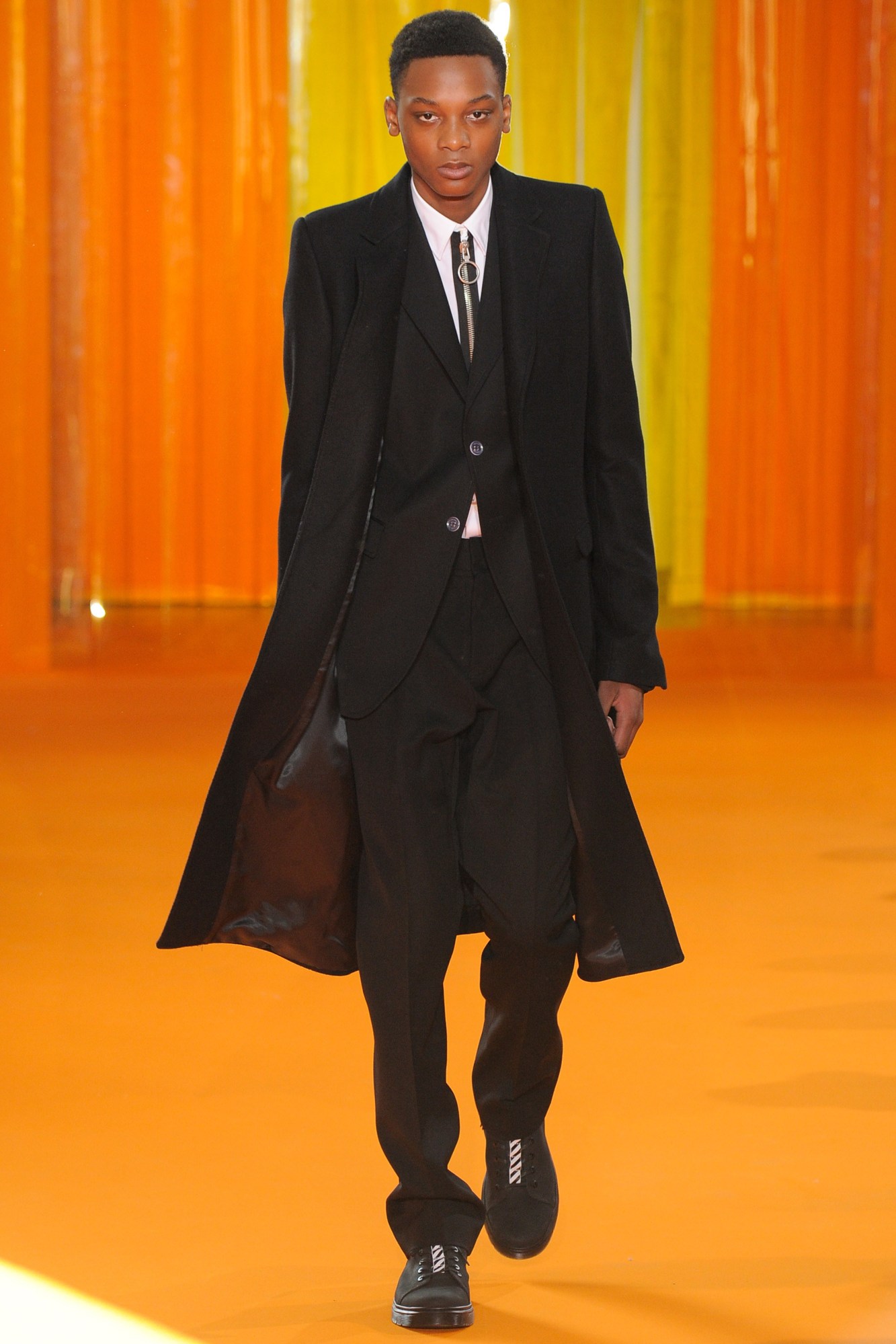
“An American streetwear label is my gateway into the world and showing in Paris,” Abloh said after the show, which nailed his morphing of luxe streetwear with directional garments such as painted white coats that paid homage to Margiela. “How do I embrace that and add a new chapter to what I believe is the evolution of fashion, which is like a post-ready-to-wear where streetwear is now considered fashion? I rooted this collection in art theory with the artist Fontana: the premise of turning a 2-D painting into a 3-D object. It’s equally high-brow as low-brow in that it’s my version of streetwear, which is my friends. All of this started out with a t-shirt: screen-printing on a Ralph Lauren champion flannel and calling it my own. That was a new way of thinking, which got traction by a group of kids that I brought with me today.” They came out with him for his bow, one dropping a cigarette on the orange runway.
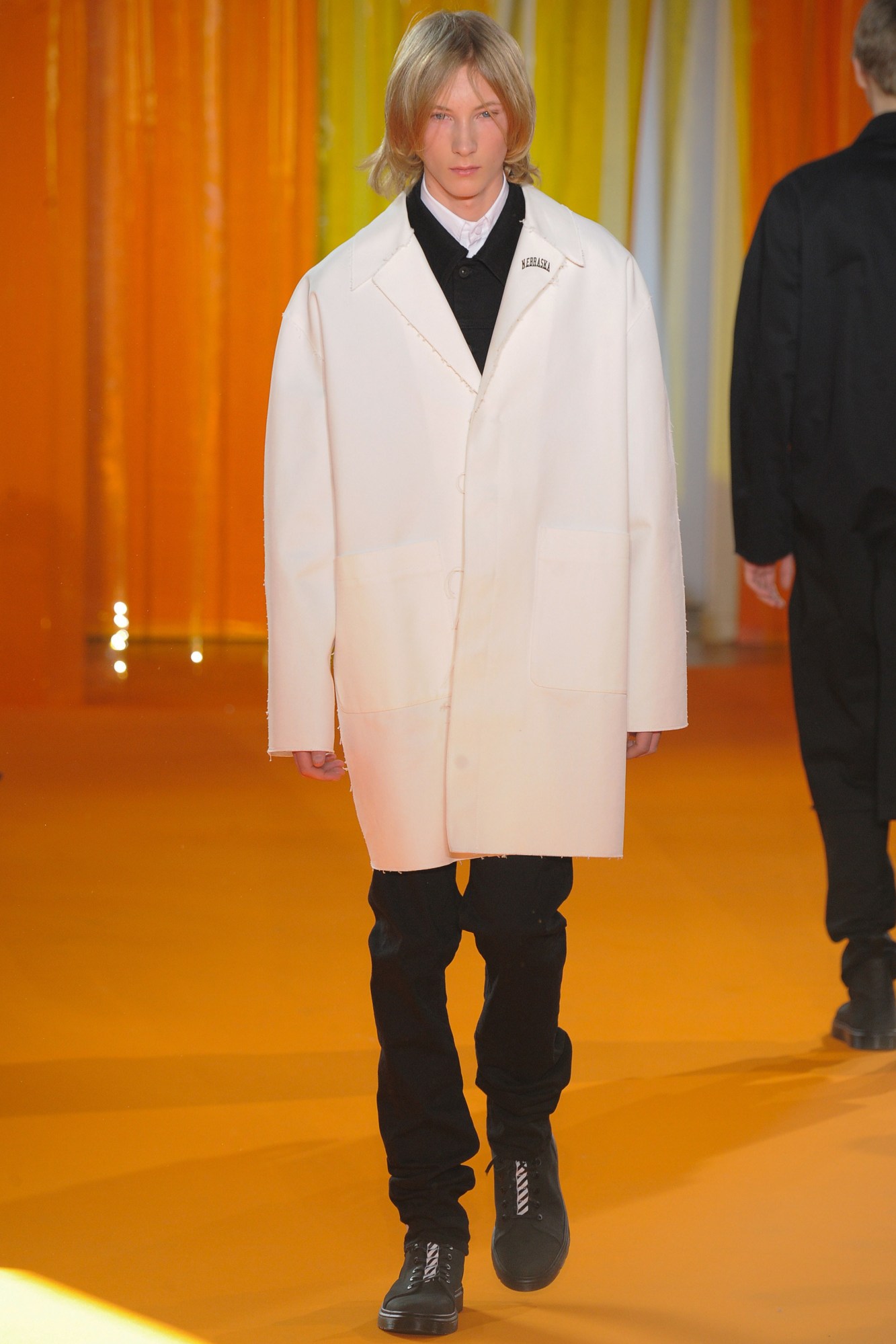
“There are things that are made in the same way that I started making clothes in this collection, all the way to the things made in the same factories that produce Louis Vuitton and Valentino,” he said. “But my version of that design process is crashing it together. It’s a juxtaposition in that it’s heavily street-influenced but also refined and luxury.” One bag was a take on the Birkin by Hermès, slashed up, blown up and reconstructed so that it became Abloh’s own. “It’s new territory for designers to come from the place that I came from, which is just outside of Chicago, with dreams of luxury brands and owning one of these brands one day, but finding a backdoor and a way to break in and offer something new. I respect the heritage but I also want to break the rules, but do it in a credible way.”
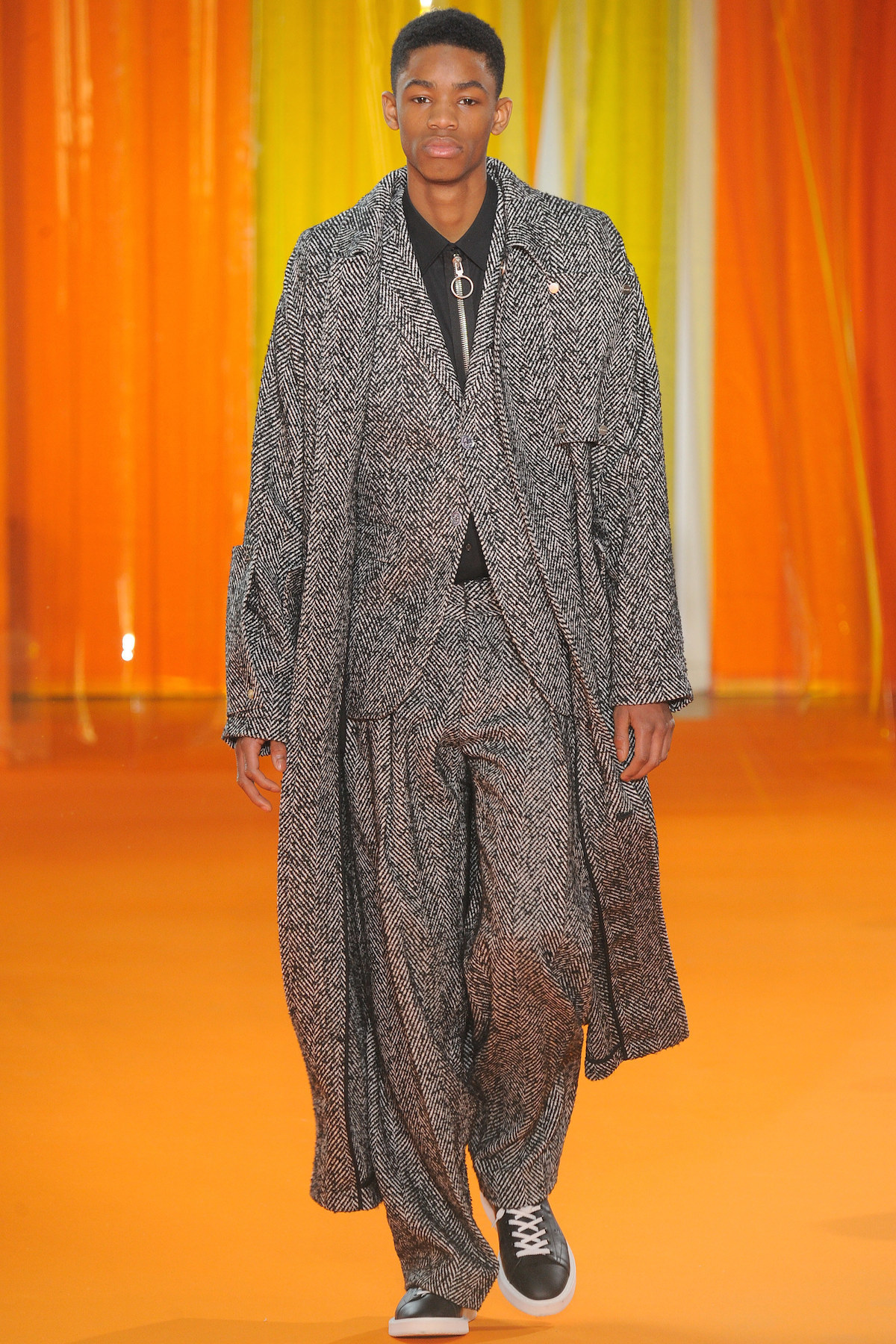
To Abloh, having freedom as a designer means not being judged by an antiquated system, but in that transition his knowledge and skill are all-important. That’s why he can get away with appropriation—because he’s turned it into his concept, which is totally valid. “You want to feel like how people felt when Yves Saint Laurent decided to do ready-to-wear instead of couture, or you wanna feel the same way as when Margiela did his first show. I think it’s the duty of young designers to bring something new to the table but either root it in fashion history, art history or, for me, skateboarding or hip-hop,” Abloh paused. “And the love of Dries,” he winked, referring to Van Noten — another fashion hero — nailing the honesty and good humor so essential to his personal and professional brand.
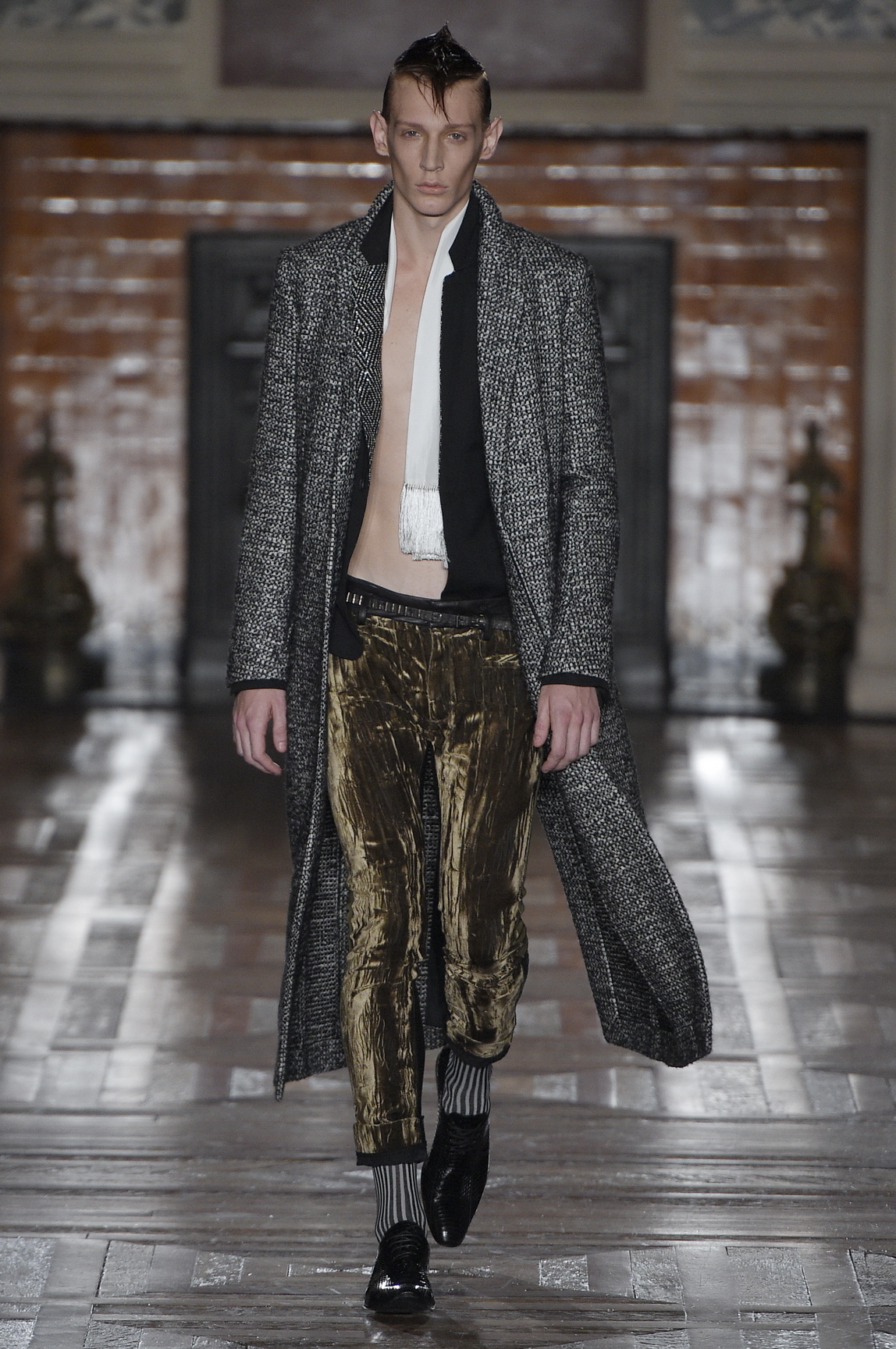
At his women’s show in October, Haider Ackermann exercised a designer’s right to expression of all forms, commenting on the refugee crisis in Europe by making a statement of fellowship: different tribes with different looks coming together. With the state of the world becoming even bleaker since then — these are the first shows in Paris since the terror attacks — it was as if Ackermann wanted to bring an optimistic ray of light onto our horizon. He did it in the way he knows best: opulence, by way of the gilded surroundings of Hôtel de Ville, supported by all the bohemian rock ‘n’ roll glam his collection could take. “We need explosions of shiny things,” he said backstage. “We need this kind of freedom.”
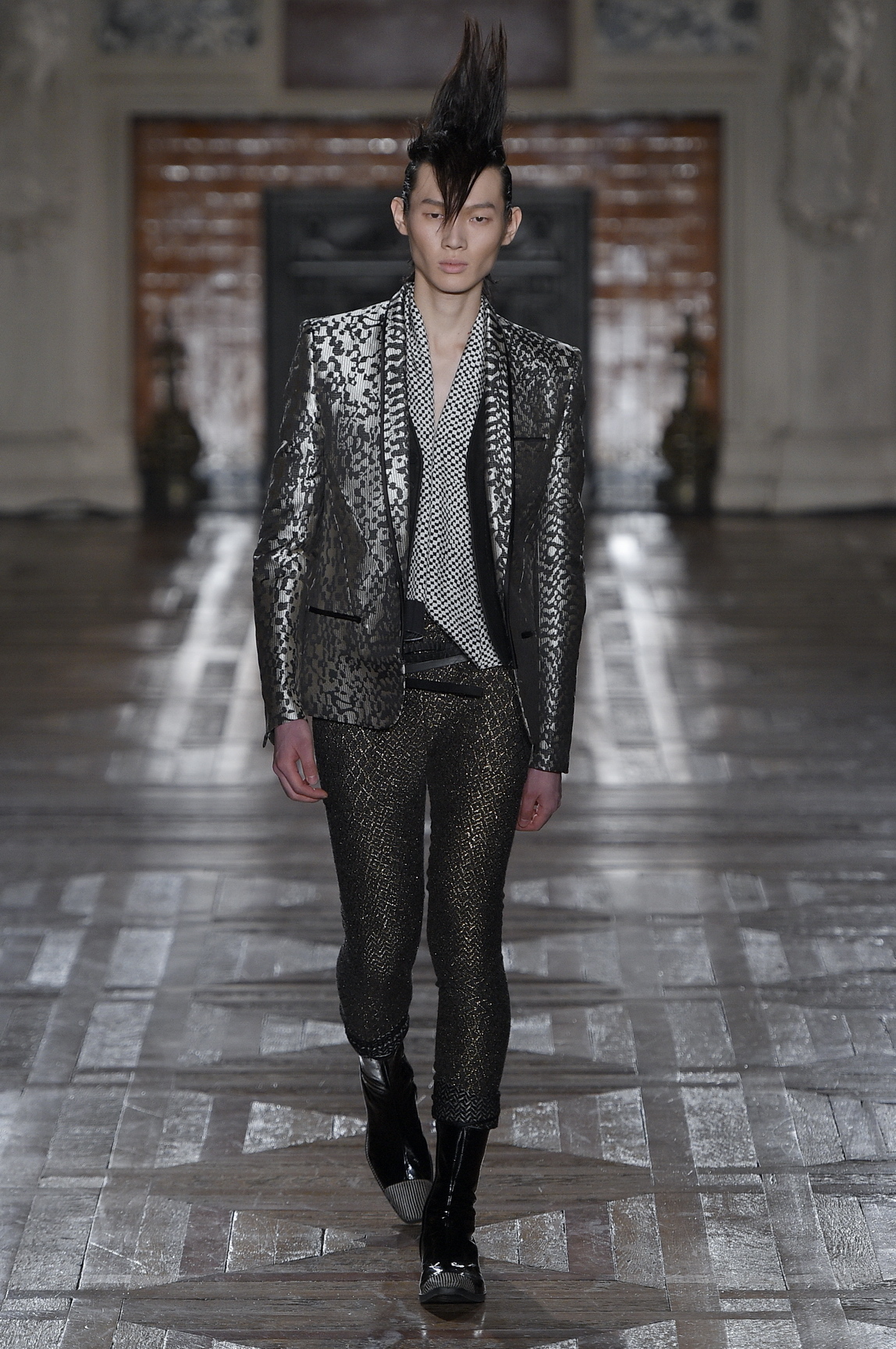
Credits
Text Anders Christian Madsen
Backstage photography Jason Lloyd Evans
Catwalk photography Mitchell Sams
